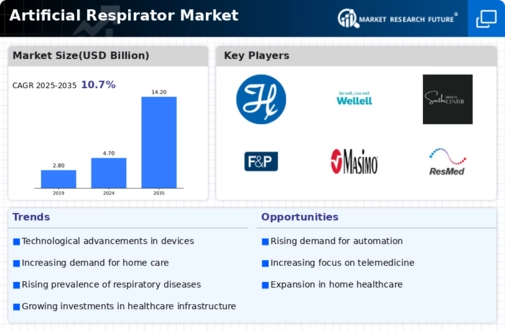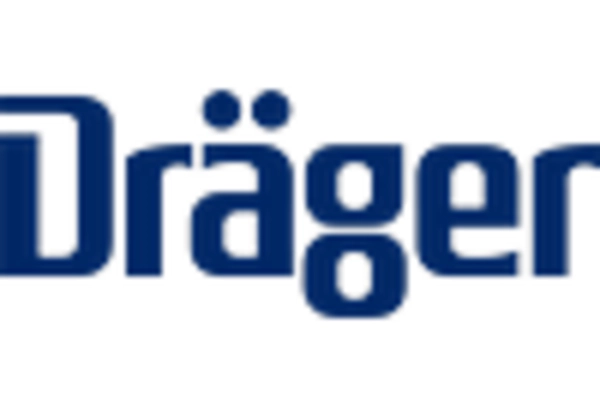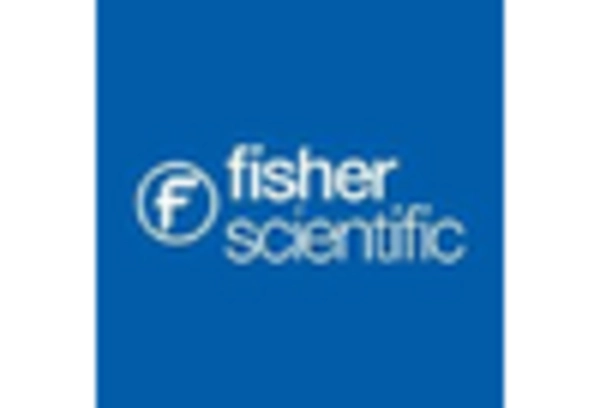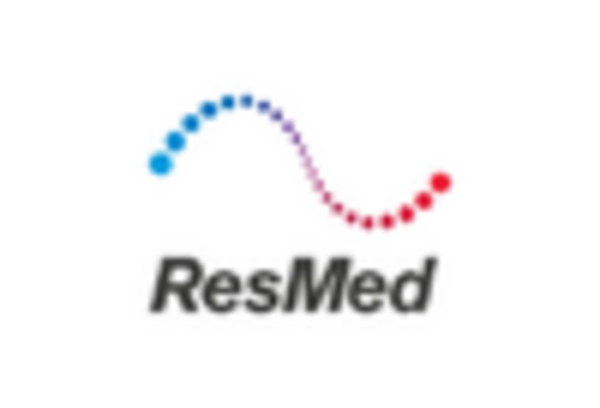Increase in Respiratory Diseases
The prevalence of respiratory diseases is a critical driver for the Artificial Respirator Market. Conditions such as chronic obstructive pulmonary disease (COPD), asthma, and pneumonia are on the rise, necessitating the use of artificial respirators for effective management. According to health statistics, respiratory diseases account for a significant portion of global morbidity and mortality rates. This alarming trend is prompting healthcare providers to invest in advanced respiratory support systems. The market is expected to grow as healthcare facilities expand their capabilities to address the increasing patient load. Consequently, the Artificial Respirator Market is likely to see a sustained demand for innovative respiratory solutions.
Regulatory Compliance and Standards
The Artificial Respirator Market is significantly influenced by stringent regulatory compliance and standards set by health authorities. These regulations ensure that respiratory devices meet safety and efficacy requirements, thereby fostering consumer trust. Compliance with international standards, such as ISO and FDA regulations, is essential for manufacturers aiming to enter various markets. The increasing emphasis on quality assurance and risk management in the design and production of artificial respirators is likely to drive market growth. As regulatory bodies continue to update their guidelines, manufacturers must adapt to these changes, which could lead to increased operational costs. However, adherence to these regulations ultimately enhances the credibility of the Artificial Respirator Market.
Rising Demand for Home Care Solutions
The Artificial Respirator Market is witnessing a notable shift towards home care solutions, driven by an aging population and a growing preference for at-home medical care. Patients increasingly seek respiratory support in the comfort of their homes, leading to a surge in demand for portable and user-friendly artificial respirators. This trend is further supported by advancements in technology that enable remote monitoring and telehealth services. According to recent estimates, the home care segment is expected to account for over 30% of the total market share by 2026. As healthcare systems adapt to this demand, the Artificial Respirator Market is likely to expand, offering innovative solutions tailored for home use.
Growing Investment in Healthcare Infrastructure
The Artificial Respirator Market is benefiting from increased investment in healthcare infrastructure across various regions. Governments and private entities are allocating substantial resources to enhance healthcare facilities, particularly in developing nations. This investment is aimed at improving access to quality healthcare services, including respiratory care. As hospitals and clinics upgrade their equipment and expand their services, the demand for artificial respirators is expected to rise. Furthermore, the establishment of specialized respiratory care units is likely to contribute to market growth. The ongoing development of healthcare infrastructure is a promising factor for the Artificial Respirator Market, indicating a positive outlook for the future.
Technological Advancements in Artificial Respirators
The Artificial Respirator Market is experiencing rapid technological advancements that enhance the functionality and efficiency of respiratory devices. Innovations such as smart sensors, artificial intelligence, and connectivity features are being integrated into modern respirators. These advancements not only improve patient outcomes but also streamline the workflow for healthcare providers. For instance, the incorporation of real-time monitoring systems allows for better management of patients' respiratory conditions. The market is projected to grow at a compound annual growth rate of approximately 8% over the next five years, driven by these technological innovations. As manufacturers continue to invest in research and development, the Artificial Respirator Market is likely to witness a surge in demand for advanced respiratory solutions.


















Leave a Comment